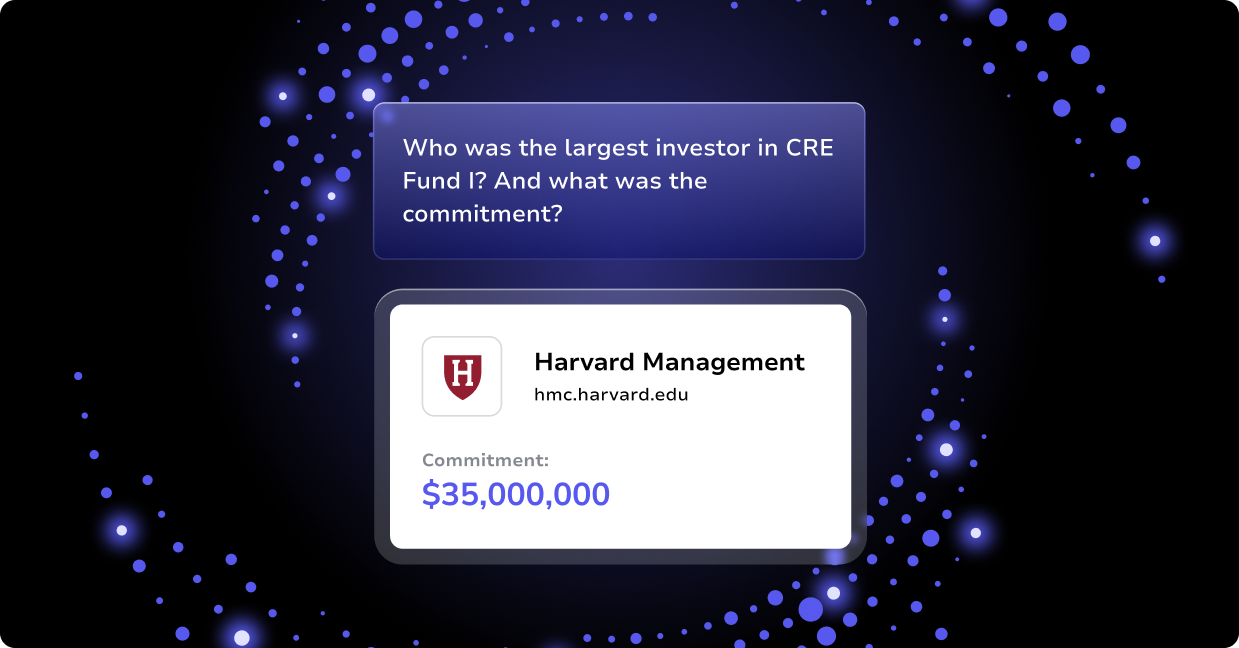With increasing pressure from investors about fees and fierce competition across the industry, private equity CFOs are looking for new ways to streamline and stand out. Operational efficiency is a top priority for many private equity firms and executives.
It is no surprise that firms are investing in private equity technology to address these key challenges and many more:
- Making data management more efficient
- Improving reporting capabilities
- Integrating systems for a stronger investor communication platform
Whatever firms are looking for, transformation through purpose-built private equity technology is now the name of the game.
Key advantages that come from investing in new solutions include:
- Optimizing workflows
- Reducing operational expenses
- Freeing personnel resources to focus on more strategic endeavors that support revenue growth
And those advantages together help firms achieve their ultimate goal: standing out from the competition.
In this blog post, we cover how private equity firms can improve operational efficiency and their ability to create an unmatched stakeholder experience to differentiate themselves in the marketplace.
Step 1: Use Private Equity Technology to Make Data Self-Serve
What if every stakeholder could access the real-time information that’s relevant to their specific goals—and get that data whenever they wanted it?
That’s crucial since every stakeholder has different interests and needs. So, sending out, or providing access to, the information you think they’ll want is a strategy that’s bound to fail in many instances. One-size-fits-all is not an approach that works in private equity.
Intuitive solutions like Altvia give customers, investors, or constituents easy, self-serve data access and important functionality right on their desktop. After taking just a few minutes to learn how to use the intuitive tools in the software, the entire team is able to work more efficiently, spend less time waiting for information, and more time acting on its insights.
We all know that timing is everything in this industry. Miss connecting with someone—by days, hours, or even minutes, in some cases—while your competition is doing exactly that and you may miss out on starting or strengthening a long, lucrative relationship.
Step 2: Ensure Quality Control with Private Equity Technology
In addition to offering a simpler way to manage information, today’s private equity technology solutions can drastically improve your firm’s data quality control, flagging miscalculated or outdated data automatically. Providing stakeholders with inaccurate or old information is a sure way to make them question your attention to detail and also your capabilities in general.
With more accurate information from the get-go, your firm is poised to put together more profitable deals. Another plus? You can consolidate data from multiple sources into one central private equity technology system and optimize workflows to scale for growth.
Step 3: Leverage Technology for Private Equity Efficiency
Whether you’re working on the initial round of funding or are just days away from closing the deal, the reporting tools in today’s private equity technology can ensure everyone on the team is on the same page. What’s more, these tools can improve the efficiency and effectiveness of reporting to investors.
You can also take advantage of convenient communication tools for connecting more efficiently with busy investors. Stakeholders appreciate getting timely, concise, and helpful information.
Private Equity Technology Is the Key to Steady and Significant Improvement
Of course, throwing private equity technology at a problem is not going to change your business overnight. It’ll take some time and effort to implement a new system the right way. But in the end, your team will be able to work on more fulfilling—and profitable—tasks that set your firm apart.




